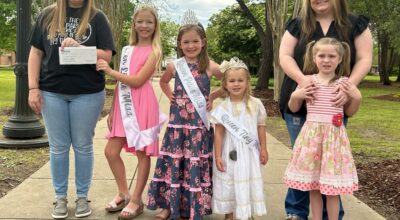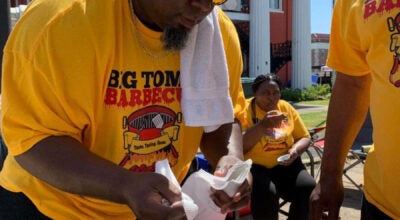Quieting the Unquiet Ghost of Gaineswood
Published 10:28 pm Tuesday, October 11, 2011
It is the season for ghouls, goblins and ghost stories. In Demopolis and the surrounding area, few stories are more prominent than Kathryn Tucker Windham’s classic tale of The Unquiet Ghost of Gaineswood.
Archived in a collection of Deep South tales known as 13 Alabama Ghosts and Jeffrey, Gaineswood’s resident haunter is said to be the unhappy spirit of Evelyn Carter.
According to Windham’s tale, Carter traveled from her Virginia home to join her sister, who was employed at Gaineswood. Carter’s life was full of heartache as a romantic endeavor with a French count produced no fruit and loneliness prevailed. But Carter was an accomplished piano player and is said to have enjoyed playing music to soothe and celebrate.
Yet, death was to have brought even more dissatisfaction to Carter as her body was alleged to have been stored under the staircase until such time as it was safe to transport it back to her Virginia home for burial. Now, at least in Windham’s tale, Carter’s spirit haunts Gaineswood because of its anger toward its host body being kept under a staircase for so long. The spirit even turns to its old ways of tickling the ivory at midnight to find peace.
Bruce Lipscombe, director of collections and interpretation for the home, finds Windham’s story amusing and an important part of the home’s lore, but is quick to point out the “facts” of the tale are far less interesting.
Chief among the tale’s inaccuracies is that no one by the name of Evelyn Carter has ever been associated with Gaineswood. The only Evelyn associated with the home was the sister of Bettie Whitfield and the only Carters to be found did not move into the home until 1923.
Eliza Robertson is most likely the inspiration for the ghost’s character. She and her sister moved into the home in 1856 after being hired by Nathan Bryan Whitfield to serve as a teacher and governess for his two youngest daughters. Eliza died shortly after her arrival.
The French count said to have ended the romantic trist with Miss Carter is, in reality, probably the same count who courted Nathan Bryan Whitfield’s granddaughter, Edith Whitfield Dustan, who rejected the man’s advances. And the ghost’s chief source of anger was having its body stored under the stairs until such time as it was safe to be returned to Virginia.
While the tale is interesting, the Gaineswood stairs are built close to ground and offer no room for a coffin. And while the notion is quaint that her death came in May 1856 and transportation back to Virginia was unsafe due to icy roads, Alabama springs tend to argue the point of unsafe traveling conditions due to winter weather.
“Nathan Bryant Whitfield helped design the Glover mausoleum in Riverside Cemetery,” Lipscombe said. “Eliza Robertson was interred there until ‘conditions’ permitted transport of her body home to New York.”
Most of the details in Windham’s have a root in the real history of the home, a history that seems to be haunting to some and playful fun for others. Some purport to have heard “the lilting, tinkling melodies of half forgotten songs of long ago” and others hear nothing. Whether spook or spoof, Gaineswood invites each to experience his or her own encounters.





